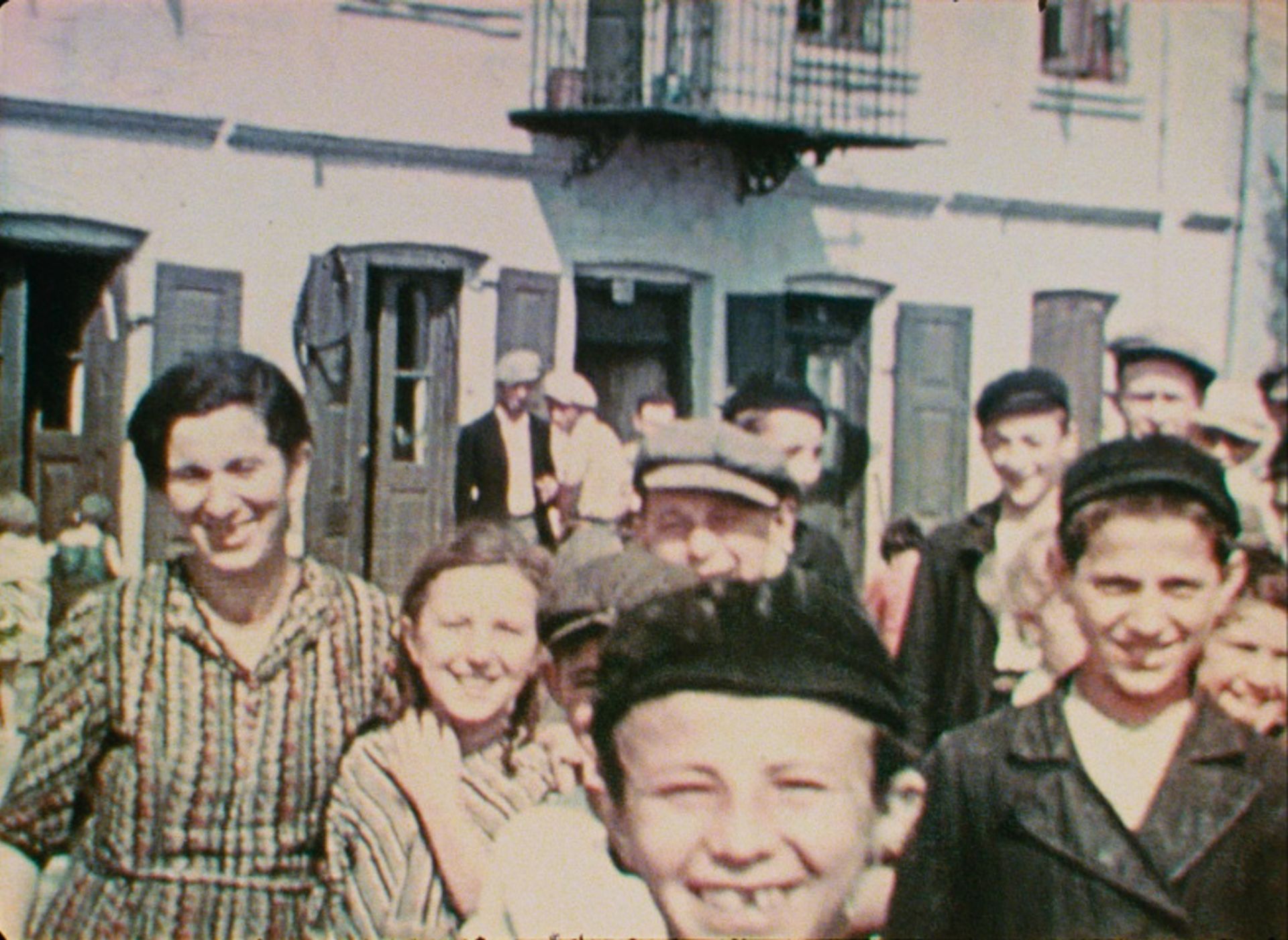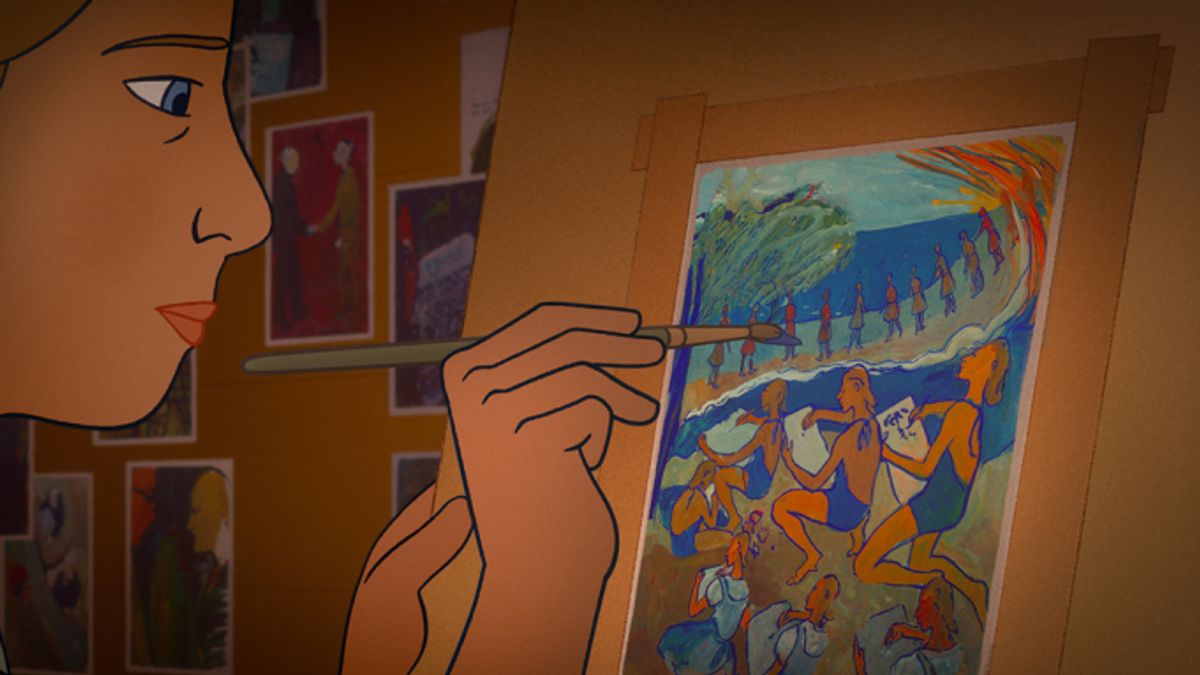Three films screened at the Toronto International Film Festival (9-18 September) probe aspects of the Holocaust, two as animated cartoons, one as a deconstruction of fragments of a 1938 home movie.
In animated graphic novel style, the film Charlotte, by Eric Warin and Tahir Rana, dramatises the short life of Charlotte Salomon (1917-43), the German Jewish painter who fled Berlin in 1938 for the South of France. There she produced a vast autobiographical body of more than 700 pictures before she was arrested, deported and murdered in Auschwitz at age 26. Salomon was six months pregnant when she was killed.
Before that, Salomon’s grandmother, under her care in France, jumped out a window to her death. Salomon, whose mother and aunt also killed themselves, would later murder her grandfather, also a refugee in France, by poisoning his food.
Boxes containing her work were recovered in Villefranche, outside Nice, after the war. Her father, a surgeon, who survived the Holocaust, donated her work to the Jewish Museum in Amsterdam. (There he met Otto Frank, who asked him whether there might be readers for his daughter Anne’s diary.) As Charlotte’s images were seen and studied, her complicated short life became the subject of exhibitions, biographies, at least one novel, a documentary film, and now an animated feature. Killed before her talents matured, she has the star status of a martyr in France, ensuring this film will have an audience.
Salomon’s family and her emotional entanglements are as hard to distill as they are to depict. Yet Charlotte, narrated by the actor Keira Knightley, is not complicated enough for the artist’s wrenching family story of abuse and suicide—and murder—taking place inside the immense Holocaust tragedy of flight, arrest and extermination. The animated drawings in this film are appealing, but generic. The well-meaning Charlotte is better seen as a place-holder until a more ambitious film about Salomon overtakes it. It is a mystery why such a production has yet to be attempted.

Anne Frank sits with her imaginary friend Kitty in a still from the animated film Where Is Anne Frank Courtesy of TIFF
In Where Is Anne Frank, meanwhile, the Israeli animator and director Ari Folman relates a much-told story one more time, with a new character. This is Kitty, Anne’s imaginary friend in her diary, who is shown as a red-headed teenager in the time-bending animation. The two discuss Germans, boys, movies and the hygiene of others in the family’s hiding place. Kitty vaults through time to question the Anne Frank House’s prominence on Amsterdam’s tourist circuit. And she sees parallels between the Frank family’s fate and the plight of refugees in Amsterdam today.
In Waltz with Bashir (2008), Folman and his drawing collaborator David Polonsky exhumed Folman’s memories of the 1982 Israeli invasion of Lebanon, notorious for the massacre of Palestinians in the Sabra and Shatila refugee camps by Christian militias allied with Israel. The animation gave us war as a personal hallucination, without minimising its horror.
In Where Is Anne Frank, Folman seems to be reconfiguring things to reach the younger audience for whom Anne Frank—famously played by Audrey Hepburn look-alike Millie Perkins in a feature film in 1959—may have been reduced to a brand. His own characters say as much. He and Polonsky already published a graphic adaptation of her diary for readers aged 8 to 12. Part entertainment, part revisiting of a myth, his update aims directly at readers who are the same age as Anne when she wrote her diary. It is also a reminder of the high bar that the original set.

A still from Three Minutes – A Lengthening, based on a home movie shot by a Polish-born Jewish-American traveller Courtesy of Family Affair Films/U.S. Holocaust Memorial Museum
The visual language of Three Minutes – A Lengthening, however, is anything but cartoonish. The film reconstructs its stories from the scant evidence in its source, moving pictures of Jewish life in Poland.
Directed by Bianca Stigter and co-produced by Steve McQueen, the film has its origins in a decaying three-minute home movie made by a Polish-born Jewish-American traveller, which was discovered by that man’s grandson, Glenn Kurtz, in a closet in Florida. Kurtz spent four years identifying the murdered townspeople (and a few survivors) in those mute filmed fragments, chronicling that process in the book Three Minutes in Poland: Discovering a Lost World in a 1938 Family Film (2015).
The film’s narrator, Helena Bonham Carter, and Kurtz and Maurice Chandler (born Moszek Tuchendler), a survivor from the town of Nashielsk, look and look again at those three minutes of Jewish life in Poland in the year before the Nazi invasion. The speakers are not filmed. What we see are young people swarming in the streets in the summer of 1938, shoving each other to face the camera, to avoid being invisible before millions of them would become just that.
Stigter—and Kurtz before her—isolated and identified dozens of faces in the town of some 3,000 Jews; fewer than 100 of them survived. The film is visual archaeology, reconstituted from minimal fragments. A deconstruction that reassembles a community, it finds the people and a pulsing life in what a tourist’s moving pictures captured, a humanity that was forgotten until Kurtz salvaged the evidence.
Other films and books have documented the lives of Jewish children deported to Auschwitz, unearthed photographs taken by death camp prisoners, and visited Parisian apartment buildings emptied of Jewish families. Three Minutes – A Lengthening glimpses the humanity of lively streets of a town on a Saturday, in a vibrant society soon to be ended. Now those moments possess what the Nazis were determined to deny, an afterlife.


